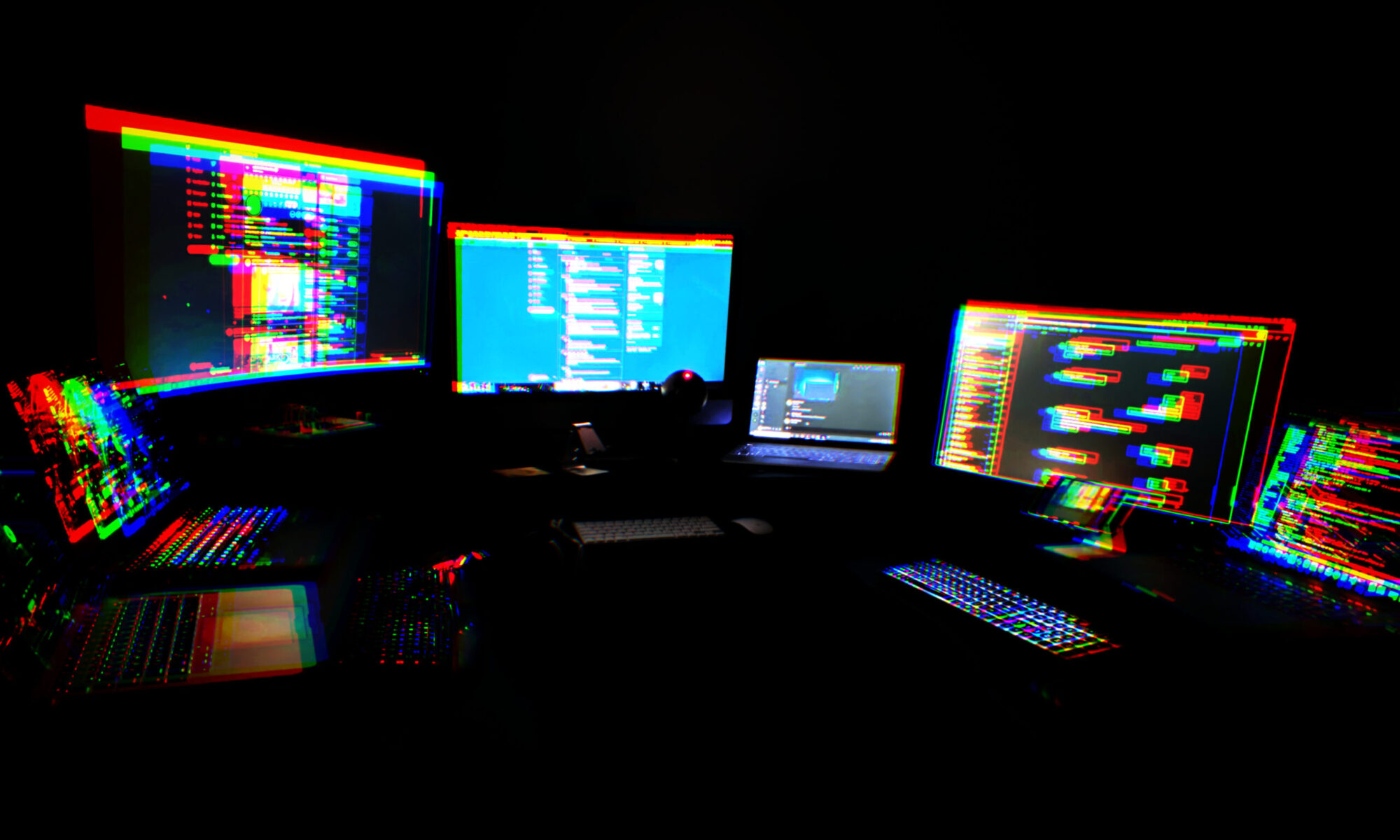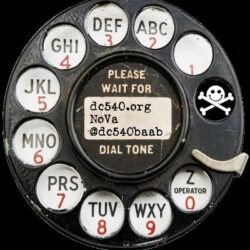The First Official Trailer: https://www.youtube.com/watch?v=l6vM9SNLcsQ&t=11s
First, a little bit of background. We had the idea for a Tarot badge last year, while walking around DefCon and getting so much love for our Kabbalah (Tree of Life) badge. That badge started so many interesting conversations and opened so many doors that we just felt it made sense to keep going down that path. When we started digging in to complete last year’s badge, I decided to commit to learning more about Kabbalah for a year and then to evaluate. I sorta mostly kinda did that, off and on. Once you start going deep on Kabbalah, you start to see it’s complete interconnectedness with Tarot. What happened was we started wishing last year that we had built last year’s badge bigger to include more about the tarot correspondences. The natural answer to badge insufficiency regret is “maybe next year.” So here we are.
The Badge: Technical
We did not stray too far from the technical features of last year’s badge. At the core level, this is still an RP2040-based Pico, some LEDs, an NRF radio and a display. But here’s why we were struggling until just this week to get it out. We lost a lot of time to decision paralysis – there are a lot of screens available. Which ones work with the Pico? Which ones will work with MicroPython? Which ones will work at our power level. A lot of research goes into these decisions. A lot of parts bought that end up never being used. I’m going to quote a prominent member of the badge-making community who recently said “Why do I do this to myself?” The answer has to be a feeling that you’re putting something useful, interesting and/or beautiful into the world. And we kind of hope we did.
We settled on the 2.2″ ILI9341 with integrated SD card. It seems to be the smallest profile screen available with 240×320 resolution, which is critical for displaying tarot cards. Any less resolution would have looked shitty. And it’s sad, but that’s one of the more expensive screens out there, which reflects in the final price of our badge.
Kevin, our developer, like to scoff at those who consider MicroPython as some sort of lesser language. Some still linger in the world of perceptions where led animations are slow, there are blockers everywhere, and too many Python libraries haven’t made it over yet. We’re here to tell you, MicroPython is thriving. Our LED animations are proof that there’s nothing slow about either the RP2040 or MicroPython. We make generous use of the dual core architecture. And Kevin managed to squeeze three SPI devices onto a two SPI bus system. And nobody knows why, but apparently we’ve implemented AES encryption into the badge.
Next year we’re thinking of bypassing the fully-built Pico and working with the RP2040 directly.
Please remember that none of us do this professionally. We’re all learning. This is a labor of learning, and a labor of love. Last year’s badge was the first “big thing” I ever designed in KiCad. After Defcon, this year we plan to develop some PCBs as a group in a group class series, so that more people can be part of the development effort, and we’ll teach each other some group workflow lessons.
The Badge: Features
It wouldn’t have taken much to make a badge that does a Tarot reading. We didn’t want to stop there. What I envisioned last year, and I told at least a few of you this in Vegas, was this. I wanted a badge that could do Tarot readings, but I wanted it to be OPEN. Meaning I wanted to provide at least one deck. In my naive early imaginations, I thought we’d actually find an artist to do a deck specifically for the badge. But Crowley and Harris we are not. They had time and money to pursue their project. We all have day jobs. Then we realized there are public-domain and open-licensed decks available. So we included (at time of writing) three decks on the badge to choose from. The Rider-Waite-Smith deck, a version of the Tarot de Marseille (unfortunately not the Jodorowsky version — I really want to turn more people on to Jodorowsky and the story of that deck), and what we call the Shitty Deck, one that we hand drew over DC540 meetups. Trust me when I tell you that this deck is absolutely shitty.
We’re including instructions on how to add your own decks to the SD card to make them available for display. It’s slightly convoluted, they have to be resized and converted to raw format, and a naming convention is enforced. But think about it — once you do this process once, you have that deck for use on the badge. We could populate the SD card with the hundreds of copyrighted decks out there that can be found on various file-sharing platforms, but that would be violating copyrights, and that would be wrong. So maybe scan the decks you have. Maybe make your own deck.
So you can choose a deck, you can do a reading. What else? We have badge pairing, of course. We have a challenge game, like last year, but unlike last year when all we had to give as a prize was Defcoin, this year we’re offering a badge as the prize. Either an additional Tarot badge, or last year’s Tree of Life badge. Because of quantity issues, there won’t be many badges to go around at the con itself, so that complicates the game a bit. We’ll see how that works out. Maybe we’ll separate out part of the game so that non-badgeholders can play.
Everyone seemed to like the illumination scheme we went with last year. I’m not a fan of surface LEDs beaming photons into my faceholes, so I chose a more subdued look by strategically removing solder mask on both sides of the board and illuminating from a board below. I pushed to expand on that this year, but instead of just beaming through shapes and symbols, I put the shapes and symbols on the surface and opened up an entire wheel for shine-through. As you can see, the color of the FR4 itself tends to adulterate the LED colors a bit when illuminating large areas like that, but not excessively. I found it difficult to get a good blue to shine through, for example. As delivered, there is a lot of bleed between the different segments of the wheel, but in the demo Kevin posted last night, what you see is the result of gluing a light separation wheel to the underside of the top board. There are 24 LEDs on the bottom board this year, each illuminating half a wedge on the the top board. The separator wheel shown in the video only has 12 divisions, but still provides a nice sharp difference between the wedges. We will be providing an STL file for 3d-printing your own separator wheel, and the STL file has the inner ring defined as well, for full separation of all 24 segments. To be fair, I think beauty is in the eye of the beholder. The spinny animation in the first public demo, when run without a separator wheel, tends to lead to some interesting effects that evoke searchlight patterns at times, which is its own meaningful thing.
Searchlight casting for faults in the clouds of delusion
Anyhow, here’s what the beta version of the wheel separator looks like. It’s about 60mm in diameter. Thanks to BradánLane Studio for creating the STL.

Not Many Copies at Defcon
We are so sorry, but because we got finished so late, we were too timid to drop coin on large quantities of the badge before knowing if it would work, so we won’t have many at Defcon at all. We should have enough to show everyone, and a VERY limited few to sell or trade, but literally don’t get your hopes up. We made 25 in the first batch. There are 10 of us going. We lost a few to testing. So we might have maybe 10 extras if we’re lucky. The good news is, boards and parts have been ordered, so we’ll be able to make more when we get back home.
We haven’t had the deep communications required to figure out how we’re going to distribute such a limited number of badges. We had such a good time distributing badges last year, we wish we could have done the same thing this year. We’ll try to have those discussions by the time the con starts. But seriously, temper your expectations of getting one onsite.
Some Thought About Tarot in General
A lot of people have a lot of thoughts about Tarot. On the ends of the spectrum, there are some pretty heavy expectations people lay on Tarot. As a lifelong rationalist, I see it, much like Kabbalah, as a framework in which to view the world and life events. A structure to be superimposed, for examination and rumination. Sometimes the results can be profound, but I like to believe the results are directly correlated to how much the reader and/or readee are able to open and stretch their minds. I will quote Lon Milo Duquette:
It's all in your head. You just have no idea how big your head is.
DC540’s Status and Mission
Last year, DC540 Nova cemented our status as a 501(c)(3) nonprofit. We have banking, we’re on AmazonSmile, and we have plans to to support people both in and out of the infosec community with our skills, talents, passions and green energy. So when you’re forking over your hard-earned pay to covet one or more of our badges, please keep in mind that it’s going to a good cause. If you’d like to contribute some of that green energy directly to DC540 to support our efforts, you can do so by sending money via Paypal to [email protected]. This will help recoup dev and prototype expenses, and support our mission. Now we’re not saying that making a healthy donation might lead you to receive a badge at Defcon, but we can absolutely be bought. And donations are tax-deductible.
Future Thoughts on this badge
We don’t know if it’s possible yet, but what if a new firmware could be developed for this year’s and last year’s badge that expanded the functionality a little bit, so that when a card is displayed on this year’s badge, the corresponding sphere(s) or path could be illuminated on last year’s badge? We exposed two GPIO pins on both badges via the SAO header, so maybe… Food for thought…
Engage with us. Join our Discord. Talk with us on Twitter.

